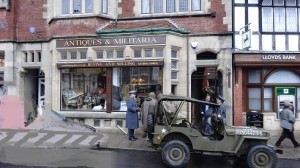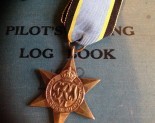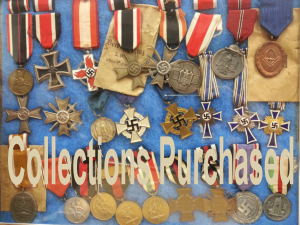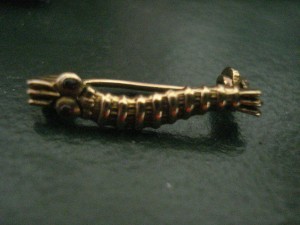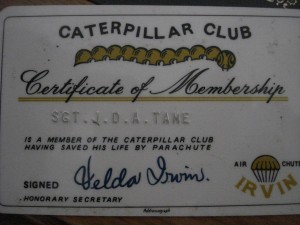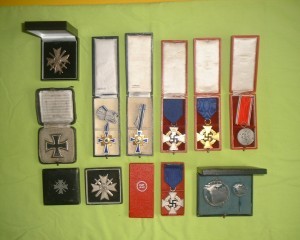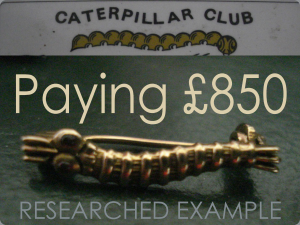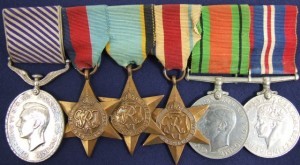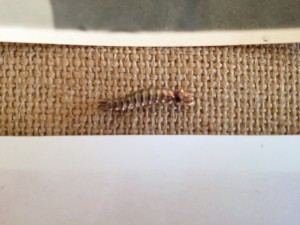
Completely free from charge WW2Buyer will inspect images sent and give you an estimate of what your caterpillar badges will realise if sold directly to us.
Local vendors are encouraged to visit our high street based premises here in Arundel.
International vendors may be comforted to know that medalbuyers.com have enjoyed a 100% record with no shipping losses .
We therefore remind vendors that in addition to offering competitive offers for buying caterpillar badges we always cover fully insured shipping at our own expense. Telephone us now to arrange a confidential appraisal.
We are keen to increase our stock of aircrew logbooks which cover all aircrew trades, periods and theaters.
Of primary interest are log books tfrom the two World Wars.
Log Books provide a useful resource for those researching the history of a particular unit, station or aircraft, or an operation or campaign.
Interestingly original unclaimed WW2 RAF logbooks were retained by the Air Ministry, however by 1959, these unclaimed logbooks which covered some 6500 feet of shelving were reviewed.
It was decided that representative samples would be preserved in the Public Record Office and the remainder destroyed by the end of 1960 just a few years before the RAF Museum was founded and the boom in private collections had started.
We are eager to obtain log books from fighter controllers and air ambulance orderlies,
as well as members of the Air Transport Auxiliary and some civil logbooks.
To Obtain A fast Offer/Free Valuation For Your Caterpillar Badge Please Complete The Confidential Form Provided In The Far Column →→
Please Note That If You Have Researched Caterpillar Badge Prices You May Wish To Include Your Acceptance figure In Any Message To Medal buyers.com.
In Most Instances We Will Pay Your Wish Price In Full. We Do Not Haggle When Presented With A Fair Opportunity .We Are Happy To Pay The Market Rate For All Caterpillar Badges
Auctioneers Sometimes Promise To Achieve More Whilst Routinely Delivering Less!
By Dealing Directly With Dedicated Professionals You Retain Control Over The Fate Of Your Valuables ,Without Surrendering A Slice Of The Pie To Middlemen.
To Obtain Our Free Of Charge Offer For Your Family Medals Complete The Form Provided.. → →
There are times as a pilot when you look out of the cockpit and can’t believe how fortunate you are to be able to witness the sheer beauty of the panorama unfolding around you.
From 2000 feet, the view from horizon to horizon appearing like a map, a patchwork of colours interspersed with tiny towns and villages. Solitude, the sky to yourself or so it seems and master of your own destiny.
On a day with cumulus clouds floating by, the sun shines on the tops of the fluffy, cotton wool like tops, their shape changing every second. Flying over the crest of the cloud and into the canyons between, what a joy, it makes your heart sing. Riding the thermals, feeling the air currents and flying free with the birds.
Fortunately today’s aircraft are pretty reliable but you are always acutely aware that at any moment you may need to snap out of your daydream if the engine coughs or some other instrument grabs your attention in the cockpit. For a moment your heart skips a beat and you focus on what the indications are, analysing the information and making a decision about how you may deal with the issue. For modern pilots flying light aircraft this is a rare occurrence and very infrequent, often not life threatening but never the less potentially dangerous if not handled correctly. Imagine what that was like for wartime pilots who faced daily, reliability, flak, fighters and weather issues. Not much time to enjoy the view and always flying in danger laden skys. Each time they were presented with an emergency in the cockpit, the likely hood was that they were probably going to have to make life or death decisions, for themselves or the crew and sometimes fast!
These attention getting heart stopping moments were very frequent for them with the split second decisions that they made being all that may save them and their crew or end their life. The first time that I was to purchase a gold caterpillar badge it made me wonder what this poor chap had been through to win this award having taken to his parachute. Had he been struggling out of a burning cockpit or maybe fallen victim of an engine failure? The award does not really convey the story, I was aware that it was given for bailing out of an aircraft using an Irving parachute but that was all. I could only imagine the possible story behind the badge, knowing a little of the pilots service record. What events lead up to the emergency evacuation, I wanted to understand the decisions made by the pilot and to feel the emotion faced by the young Spitfire pilot. With research into the events through the operational record books and speaking to an eye witness who was airborne at the time, could I begin to really understand what this tiny little gold badge actually represented. For many, it would have been a life changing event, bailing out of an aircraft is not without risks. Would the chute open, if the aircraft was on fire, was the chute damaged. Let alone the fact that the landing brought about its own challenges!
No pilot or aircrew ever wants to leave their aircraft unless it’s really only the last option available. During wartime operations, the first thing to consider would have been which side of front line that the aircraft happened to be over. You might not have had a choice but if time and fate allowed, faced with the decision of bailing out over enemy territory, the chances of evading capture and a home run would be slim. Over sea this decision is even more critical, flying back a flak damaged bomber, loosing height and the engines giving up the ghost. The skipper knowing full well in his heart of hearts that there was nothing more he could do so many decisions and ideas running through his mind. His heart heavy with the responsibility of his crew. Did he have enough height to glide back to land, would the undercarriage come down? If they couldn’t maintain height, possibly throwing out any extra load to keep her flying. Then the question of at what height do you make the decision to bail out or to try to ditch the aircraft in the hope that it would stay afloat long enough to allow the crew to get out. Would they be found in their dinghy or get washed away, never to be seen again. In the Western Desert, one of the issues for the crew was that the odds of surviving a crash or bail out into the desert and surviving the harsh environmental conditions were slim without basic supplies and an idea of location.
leather flying helmet bomber crew




